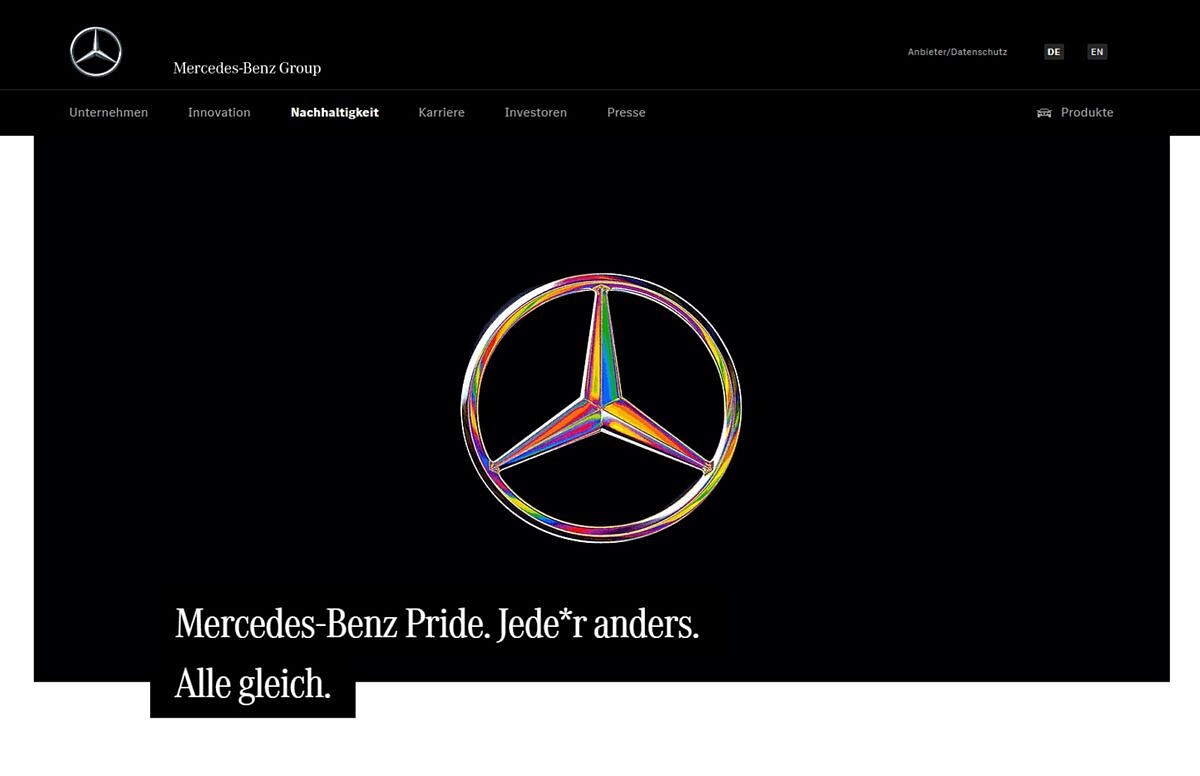Pinkwashing examples that you need to know about
It doesn’t always have to be green – brands might also give themselves a pinkwash, even if they don’t merit it. We present some examples here.

What is pinkwashing all about?
Seeing the world through rose-colored glasses is usually a positive thing – but not in the case of pinkwashing. Like greenwashing, pinkwashing is when companies claim to be committed to something, but have no or very little proof of that. Only in this case we’re not talking about sustainability but rather gender equality and people’s right to freely determine their sexual orientation and gender identity. Pinkwashing is when brands officially declare to be an LGBTQ+ ally, but act differently in practice or don’t support such communities at all or only to a limited extent.
Like in the case of a misguided sustainability communication strategy, pinkwashing might not necessarily happen intentionally. After all, helping to raise awareness of the LGBTQ+ community’s situation is a good thing. However, companies attract criticism when they run related image campaigns, while at the same time doing business that contradicts those campaigns, for example operating in countries where homosexuality is a punishable offense.
A selection of pinkwashing examples
Pinkwashing: Daimler flies the flag
The automotive group Daimler caused a fiasco in June of last year. As part of its “Mercedes-Benz Pride” campaign, it turned its logo – the famous Mercedes star – into a rainbow-colored one on social media. That did not go down well at all with some members of the LGBTQ+ community.

In case you don’t already know: the acronym LGBTQ+ stands for lesbian, gay, bisexual, transgender, queer, and all other non-cisgender identities and non-heterosexual orientations.
The visual statement definitely met with approval from some users, but others thought that the logo change was merely symbolic and the message in the statement was inconsistent with Daimler’s actual actions. It was also criticized that the logo’s colors were not changed in countries in the Middle East.
Pinkwashing examples: H&M and Levi’s
Clothing manufacturers H&M and Levi’s also caused a stir a few years ago when they brought out exclusive, colorful garments as part of their “Pride collections” to promote solidarity with alternatively oriented people. However, they were criticized for producing the garments in countries where homosexuality was still illegal until only recently or still is today, for example Bangladesh and India.
Stereotypes at Deutsche Bahn
Deutsche Bahn also officially declared its solidarity with the LGBTQ+ community in its “Pride Ride” clip. Various gay, lesbian, and queer people appear in the video, including a male ticket inspector dressed in a skirt and high heels. While some users found the clip funny, others felt it was far too exaggerated and clichéd. Showing solidarity by presenting stereotypes was criticized by the LGBTQ+ community as being counterproductive.
Pinkwashing at BMW
The Munich-based automotive group BMW ran a campaign similar to Daimler’s: it turned the logo of its Instagram account into rainbow colors to express its solidarity with LGBTQ+ people. That backfired though when it was accused of pinkwashing for changing the logo in Germany and other countries that embrace gender and sexual freedom but failing to do the same in far less tolerant countries such as Russia and Saudi Arabia.
What can we learn from these pinkwashing examples?
Claiming that you’re tolerant, yet failing to consistently put those words into action is unacceptable for many people. Exaggerated and stereotypical portrayals of alternatively oriented people can also spark outrage. Marketers therefore need a lot of tact when developing campaigns that aim to show solidarity with lesbian, gay, queer, and other groups. It is an incredibly sensitive subject that needs to be thoughtfully addressed.




